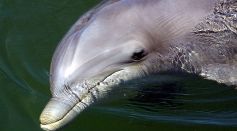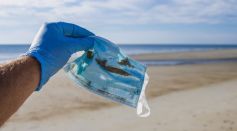ENVIRONMENT & CLIMATE

[Exclusive Interview] Author Marianne Larned, Advocate Mitzi Jonelle Tan Share Journey Towards Climate Justice

Volcanic Eruption in Spanish Island La Palma Explained: Causes, Damage, Dangers to Expect
Barry the Owl's Death in New York Potentially Caused by Rat Poison That Affected Flight Ability

McDonald’s Will Be Phasing Out Plastic Toys Soon; Happy Meal Going Green?
Life Beneath the Ice: Short Film Showcases a Magical Portal Full of Antarctic Jellies
Light-Emitting Plant: Scientists Develop ‘Glow in the Dark’ Greens to Benefit Humans
Chicxulub Asteroid Still the Cause of Late Cretaceous Mass Extinction Rather than Violent Volcanism, Study Says
Ozone Hole Forming Each Year Over South Pole Presently Larger Than Entire Antarctica; Report Says It's Due to Depletion
63 Endangered African Penguins Found Dead in Cape Town, Swarm of Honey Bees Considered Suspects

Dual Genomic Ancestry of Japanese People Debunked: Genetic Analysis Showed They Descended From Three Ancient Cultures
Phytoplasma Bacteria Knows How to Parasitize Plants; Slows Age Development and Turn Into 'Zombies'

World's Whitest Paint Ever Reflects 98% Sunlight, Cools Buildings, Help Curb Global Warming

Dolphin Was Like an ‘Obsessed Suitor’ to Woman Trainer, Commits Suicide After Heartbreak; Do They Really Have Feelings?

PPEs, Gloves, Masks Used for Protection Against COVID-19: How are They Contributing to the Current Garbage Crisis?
Most Popular

How Strong Are Tornadoes? Understanding the EF Scale and the Extreme Power Tornadoes

Glaciers Are Melting Fast: Climate Change Impact Driving Sea-Level Rise Worldwide

How Telescopes Work: Optical vs Radio vs Space Telescope Science Explained

Can the World Run Out of Water? Water Scarcity Science and Climate Impact Explained





